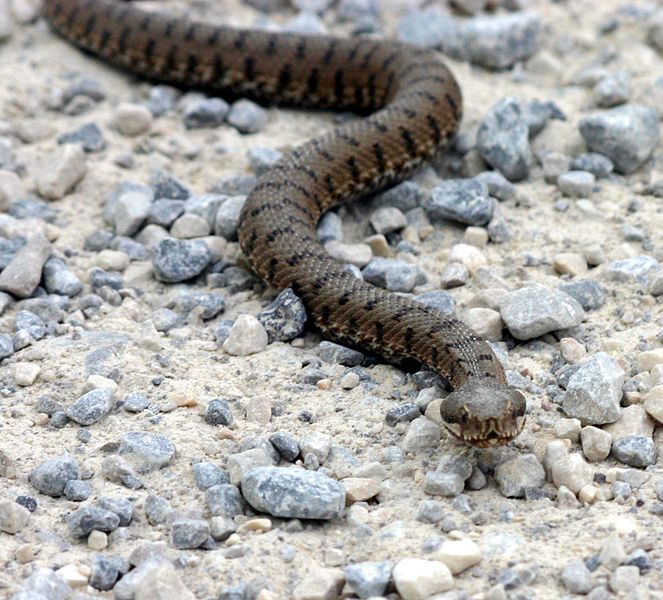A recent review of studies involving 17 populations of 8 snake species, including Ball Pythons, Asps, Rhinoceros Vipers and Gaboon Vipers, has raised the alarming possibility that steep declines may be in progress in many countries. While it is too early to draw conclusions, this news is disturbingly similar to the origins of the global amphibian decline first uncovered in 1990.
Ominous Findings
The most frightening aspect of the study is the fact that unrelated snake species in widely varying habitats and locations (Italy, Nigeria, France, Australia) were involved. Some of the largest declines – 90% in several cases – were recorded in protected areas. Much like the extinction of the Golden Toad, which disappeared from a pristine cloud forest in Costa Rica, these mysterious declines point to causes that are difficult to identify and remedy.
Several of the population losses seem to have begun quite abruptly in 1998, the warmest year on record, but further research is needed to determine if temperature is at the root of the problem.
Lessons from other Studies
I remember well the first articles, published 20+ years ago, warning of a possible global amphibian decline. Given the secretive nature and complicated lifestyles of these creatures, I believed that the information gathered was speculative at best. Of course, the crisis turned out to be very real, and continues today.
In other cases, dire predictions have been unfounded – the Himalaya’s Giant Flying Squirrel was declared “extinct” but turned out to be merely hard-to-find (a researcher who offered a reward to people living in the animal’s range received 3 specimens the first night – it seems that each new generation of biologists must re-learn this lesson!), and a recently-discovered population of Lowland Gorillas in Uganda more than doubles the previously estimated total population.
The Work Ahead
 How this new information concerning snakes will play out remains to be seen. It will hopefully spur other researchers to look closely at their data, and to view it in light of a possible widespread problem similar to that now affecting frogs and salamanders worldwide.
How this new information concerning snakes will play out remains to be seen. It will hopefully spur other researchers to look closely at their data, and to view it in light of a possible widespread problem similar to that now affecting frogs and salamanders worldwide.
Also, it is important to keep in mind that casual observations you may have made can be important in fitting together the pieces of this puzzle. My own rough notes on insect and Brown Snake numbers, written decades ago, have proven useful in 2 recent studies…please write in if you have information to share, and I’ll help you to put it in the right hands.
Further Reading
The Amphibian Ark Newsletter is an excellent source of information on the still unfolding Disappearing Amphibian Crisis.
 That Reptile Blog – Reptile, Amphibian and Exotic Pet Care and Information
That Reptile Blog – Reptile, Amphibian and Exotic Pet Care and Information



Really fascinating article. Here’s to hoping that the snakes aren’t in decline and are just hard to find! I’m guessing it’s highly likely that that’s actually true.
Snakes are very difficult to survey in the wild – I’ve spent an hour trying to locate a 17 foot long anaconda in a shallow swampy area – despite fact that sneak had a transponder that directed me to it’s location! So many are likely being missed; on the other hand, there is clear evidence that many are in decline. Best,. Frank